How to Grow Vegetables: Starter Vegetable Gardens
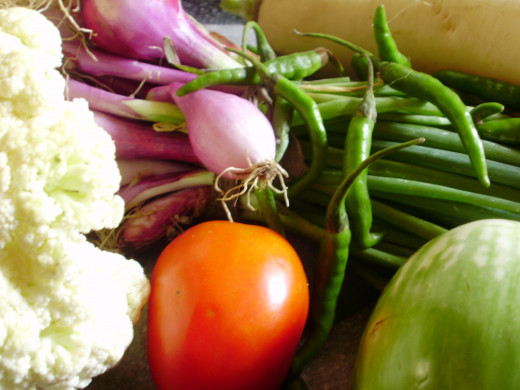
Reasons to Grow Your Own Vegetables
There's nothing better than the smell and taste of a sun-warmed tomato just picked from the plant. Growing your own vegetables can be fun, save you money and promote good health. I always try different techniques whether I grow my vegetables in a pot or in a raised garden. I have learned a lot about gardening through trial-and-error. I have visited many great garden blogs for tips when I run into problems with my garden whether it be pests or plant diseases.
When you grow your own vegetables, you can decide what you want to grow and if you would like to use pesticide or not. Organic vegetables can be quite expensive in the grocery store. Raising your own organic vegetables can save money. Heirloom vegetables can also be very expensive in the store. If you grow them yourself, you can find loads of heirloom vegetable seeds for a few pennies over what a traditional packet of seeds would cost. It's fun to experiment!
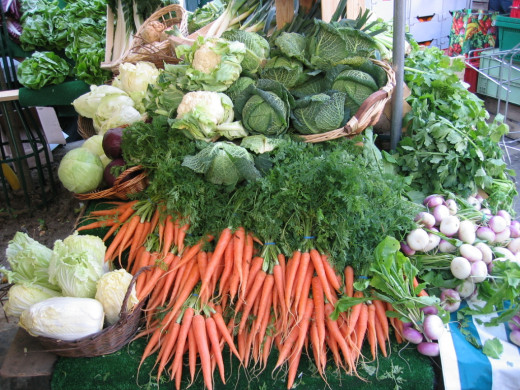
Which Vegetables Are Easy to Grow?
There are two types of plants that grow their vegetables above ground: Indeterminates and Determinates.
Another word for determinates is bush. If you see the word determinate on a seed packet or a seedling tag, it means it grows in bush form and will not grow vines. There is no need for trellises with determinate plants. You will need stakes or caging for support. These plants are usually smaller than their vining brothers. Normally, determinates will have a couple weeks to a month long production period. Once they are done producing vegetables, they shut down for the season.
Indeterminates are vining plants. You will not need stakes or caging, but you will need a trellis or fence for them to grow along. These plants have longer producing seasons. They will keep producing until they are dead.
Carrots - A root vegetable. If you are growing your carrots in a pot, try growing a shorter variety like the Scarlet Nantes.
Radishes - A root vegetable. Radishes can be full-grown from seeds in 3 weeks!
Beets - A root vegetable.
Green Beans - Can be grown on a vine or bush.
Peas - Grows on a vine. These are one of the very first vegetables you can plant for the year. They love cooler weather.
Lettuce - Plant seeds every two weeks to have an ongoing supply of lettuce. Pick before it bolts.
Spinach - Similar to lettuce.
Tomatoes - Can grow on a bush or vine. They will need support since these plants can get very heavy. They are very prolific (heavy producers).
Bell Peppers - A bush plant. They are also very heavy producers.
Summer Squash - A vining plant. You can either let them grow along the ground or you could use sturdy chicken netting to climb.
Cucumbers - A vining plant. There are tons of varieties. You can even grow pickling cucumbers which are smaller and quicker to grow.
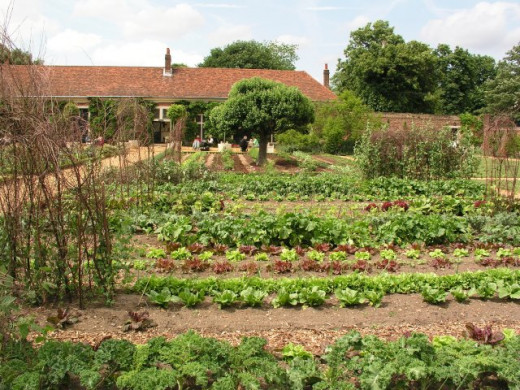
Where to Plant Vegetables
You can grow vegetables anywhere! You can grow vegetables in pots, in an apartment, indoors, in raised gardens or large outdoor gardens. You can grow them vertically if you have a small yard.
Most vegetables love the sun, especially the summer vegetables. There are a few vegetables that will tolerate some shade, like lettuce, spinach and peas.
Vegetables need plenty of space to grow. For instance, a tomato plant packet may say plant one seed per square foot. Follow the rules on the back of the package! I had tried to grow a few seeds per square foot thinking that they wouldn't get that big. They overcrowded each other. Each plant couldn't get the nutrients it needed and they did not produce many tomatoes. When the tomatoes did grow, some of them would be so far in the branches that I wouldn't find them until they were starting to rot. I have learned from my lesson. Don't overcrowd! They look like they have enough room when they are seedlings, but they get a lot bigger!
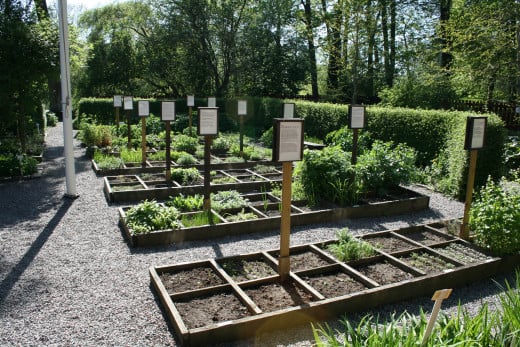
Vegetable Garden Layout
If you have a large yard, you can make a conventional garden. Plant seeds or seedling in a row with about a 2 foot space in between rows so that you could walk between rows and take care of your vegetable plants.
If you have a smaller yard, you could make a raised garden or just use pots. If you choose to make a raised garden, 4 foot by 6 foot is a nice size. You can reach the middle from all sides. Look at how big a vegetable plant will get before planting it. This is a great way to do square foot gardening. Get a paper out and make a 4 inch by 6 inch rectangle. Each square foot is equivalent to one square foot in your raised garden. If it says that you should plant one tomato plant per square foot, then put one dot in the middle of a one inch square in your rectangle. If you can plant four plants per square foot, put four dots evenly in one square inch on your paper. You can get an idea of where to put each of your vegetables before you begin planting. Each plant will have enough room to grow and you will know how many plants to buy.
If you live in an apartment or a house with a small yard you can still grow vegetables. We just moved into a house with a tiny backyard. I don't have enough room for a raised garden like I had before, so I tried my luck this year with growing vegetables in pots. I found a few large pots and put Miracle Grow in them. My plants are bigger than they were with any other method. I think this is because the soil is so much better than what they would find in the ground. I also sprinkle a little plant food into the pot each month.
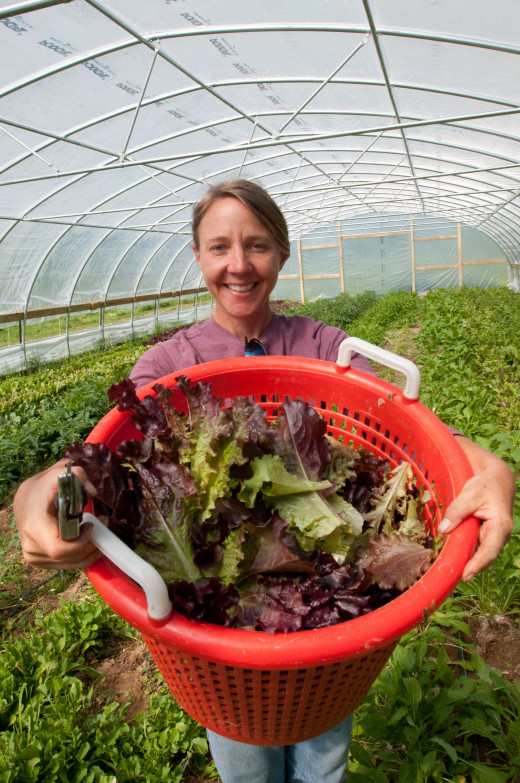
What Vegetables Are in Season?
Plant in Early Spring
Arugula, Broccoli, Brussel Sprouts, Cabbage, Cauliflower, Chives, Collard Greens, Kale, Kohlrabi, Lavender, Lettuce, Mustard Greens, Onions, Oregano, Parsley, Rhubarb, Rosemary, Sage, Sweet Peas, Strawberries, Swiss Chard, Tarragon and Thyme.
Plant After The Last Spring Frost
Basil, Beans, Cantaloupe, Corn, Cucumber, Dill, Eggplant, Lemon Balm, Mint, Okra, Peppers, Pumpkin, Squash, Stevia, Strawberries, Sweet Potato, Tomatoes and Watermelon.
Plant In The Late Summer And Fall
Arugula, Broccoli, Cabbage, Cilantro, Collards, Kale, Lettuce, Mustard Greens and Parsley.
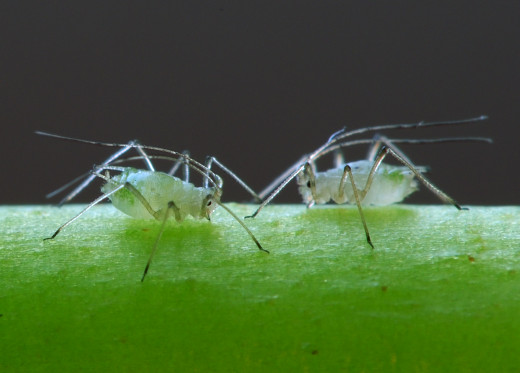
How to Protect Your Garden from Bugs and Pests
Even with lots of hard work, pests could take out your crop quickly. Some of the worst pests are bugs like aphids, tobacco horn worms, squash vine borer, squash bug and cut worms.
Some of the best natural ways to keep pests out of your vegetable garden is to sprinkle coffee grounds in the garden or grow marigolds or garlic in the garden. The smell repels some bugs. You could also make a spray with most water and a little oil or soap and spray it on any bugs you see. Do not do this when it is really hot out. Do it on cooler days or when the sun is going down.
Cats and dogs can cause problems too. They can dig up plants, squish plants or leave a 'present' on or near your vegetable plants. To keep cats out of the garden, sprinkle cut up orange peels around the edge of the garden. For dogs, put up a fence to keep them out.
Happy Gardening!!!
DO YOU GROW YOUR OWN VEGETABLES?
This content is accurate and true to the best of the author’s knowledge and is not meant to substitute for formal and individualized advice from a qualified professional.
© 2012 Melanie Casey








